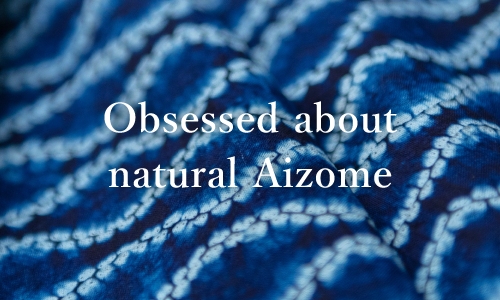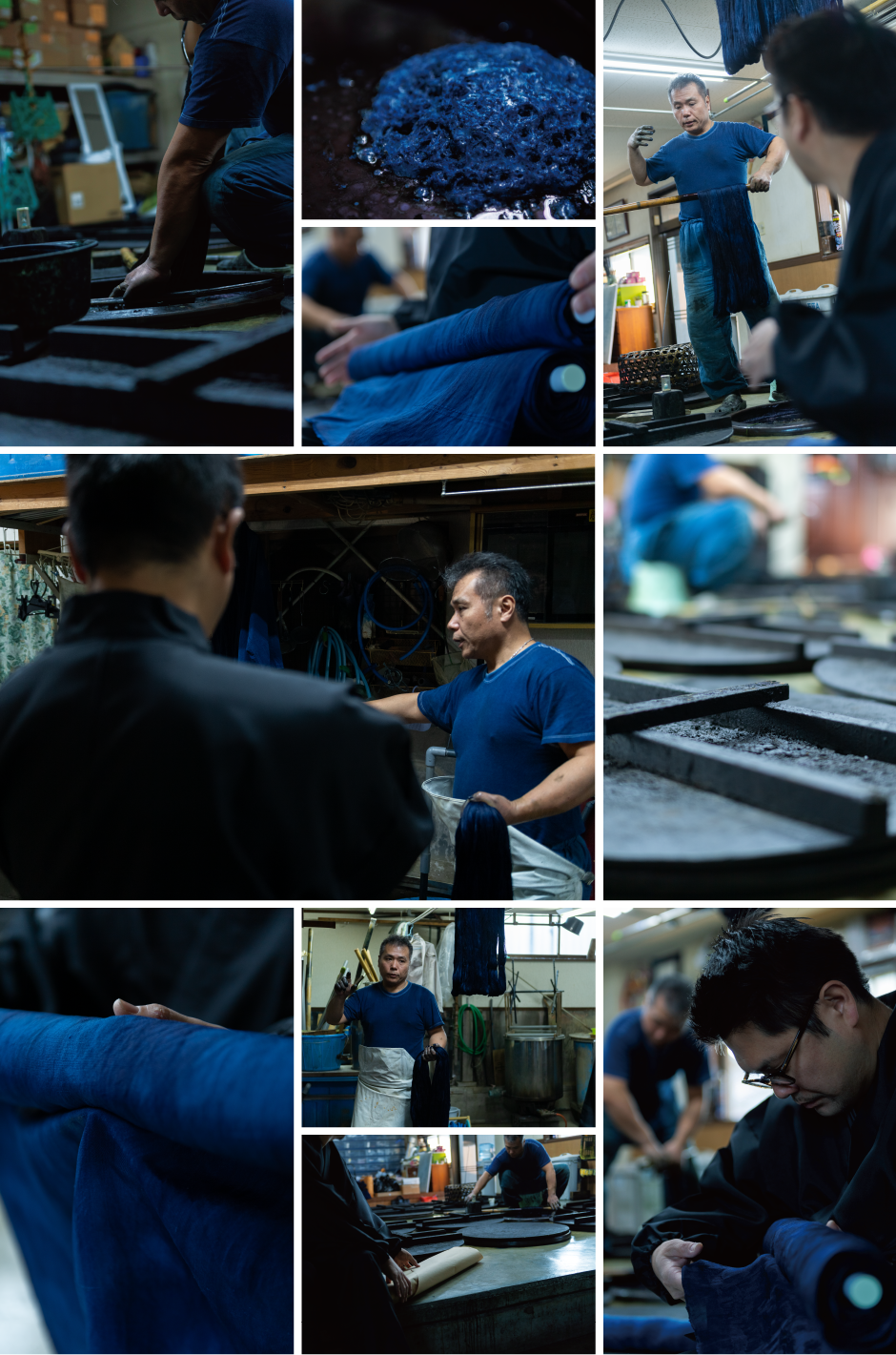
Many Aizome products contain chemical agents in their dye. Our principal, however, is to make scrolls only from organic and authentic Aizome dyes made from fermented local Tokushima indigo plant lye. Aizome has been commonly used for restoring antique scrolls since ancient times because it is effective in repelling odors and insects, and also fire-resistant. Authentic Aizome means the fabric was dyed with indigo dye made from Sukumo (fermented indigo leaves) contained in traditional Aigame ceramic jars (in Tokushima these jars are exclusively Otani ware). Our hanging scrolls use high quality silk fabric, dyed specially for us by expert dyers who employ traditional dying techniques that have been maintained since the Edo period.
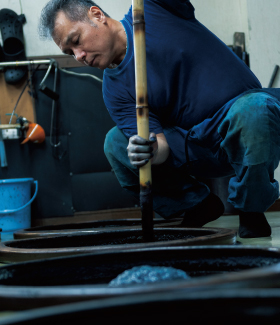
-
Mr. Ranshu Yano
Mr. Yano is a dyer who uses a time-honored technique from Japan’s Edo period (1603-1868) to preserve the traditional Japanese indigo color. The dye is made from fermented natural indigo lye. His dye contains no chemical agents so it is eco-friendly and safe to wear on the human body.
Silk fabric
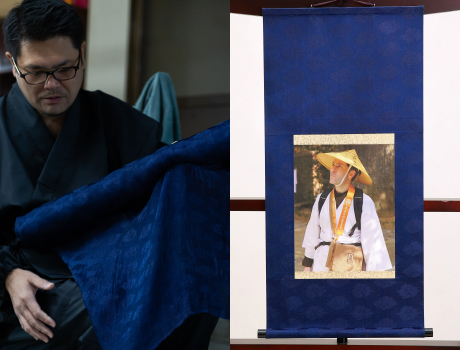
-
Dying pure silk
Pure silk satin weaves require a special dying technique. The artisans soak their hands in the ceramic jar and delicately wave the fabric until the whole fabric is dyed evenly. Because the surface of the silk fabric is covered with animal proteins, it takes more skill than dying cotton and linen fabrics, which are botanical. Silk fabrics properly and carefully dyed with quality indigo dye display a beautiful pure silk sheen.
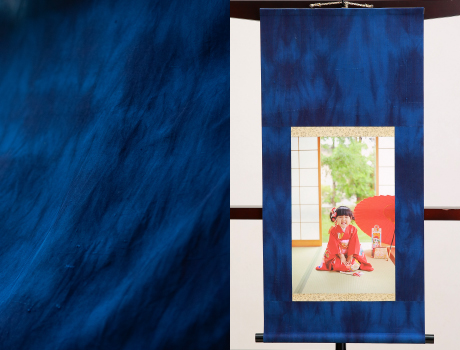
-
Aigaeshi Technique
One of the various Aizome techniques is called Shibori (tie-dye) in which the fabric is tightly tied with threads before dying. The tied areas then remain white. In the Aigaeshi technique, the whole fabric is tied with threads and dyed once. The threads are then removed and the fabric in placed in the dye up to five more times. This creates a graded effect with colors ranging from light to darkest indigo. The Aigaeshi technique takes more effort, but makes the fabric interesting and tasteful.
Authentic indigo color
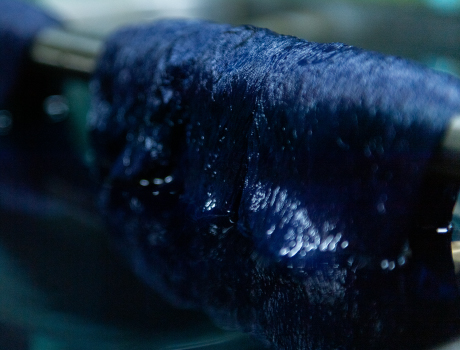
-
Kachi Iro Color
Look closely at a rich, deep indigo blue and you will also find hints of red in its color. The red in indigo blue is called Kachi Iro (literally “Victory Color” in Japanese). During the Warring States Period (13th to 17th Century) many soldiers wore Aizome underwear under their armor. Aizome was believed to have antibacterial and hemostasis effects. Because of this, and because Aizome also contained the Victory Color, soldiers wore Aizome items to protect them during battle. Sukumo is an organic substance that contains not only the blue color from indigo but other colors such as yellow and brown, etc. Deep strong indigo blue with the slightly red Kachi Iro is generated through various complicated processes. The fabric is first dyed 10 times, then washed with pure subsoil water to remove impurities, then dried, and then dyed again one last time.
Tennen Aku Hakkodate method
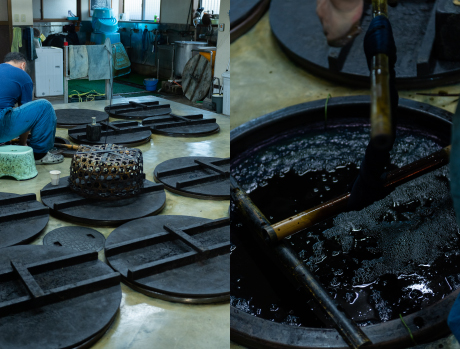
-
Aigame (traditional Otani ware pottery jars used for Aizome)
In order to make authentic and natural Aizome dye, dyers must use specialized Otani ware pottery jars designed exclusively for Aizome. Recently, some dyers have started using stainless steel containers or plastic buckets instead, but the finished products show the difference. We use special Otani ware pottery jars that have been buried one meter under the ground in Naruto City, Tokushima Prefecture.
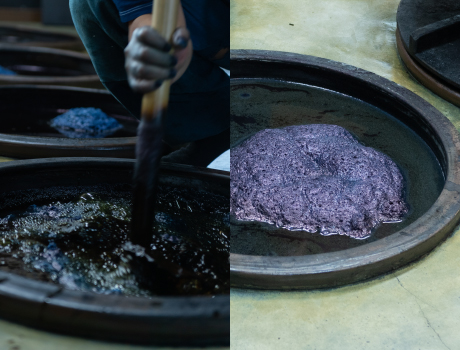
-
Flower of Ai (Indigo)
The Ai maker mixes Sukumo (fermented indigo leaves) once a day with a bamboo stick, creating small bubbles called “Flower of Ai” at the center of a ceramic mixing jar. The Ai liquid is allowed to sit undisturbed every other day and the Flower of Ai becomes smaller and smaller as the Ai liquid’s color gradually fades. After 3 to 4 months, the Ai liquid reaches the end of its life and is pumped out of the jar to be used as organic fertilizer.
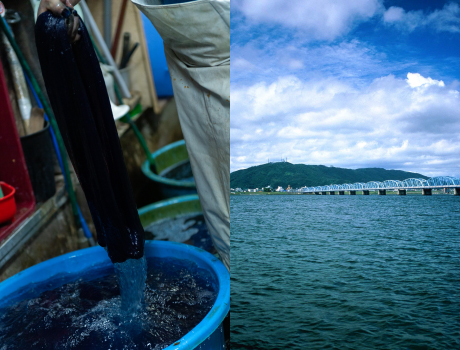
-
Yoshino River Subsoil Water
Dyed fabrics are washed with fresh water three times before being soaked overnight. We use subsoil water pumped from a well located on our own premises to avoid the chloric smell of tap water. This leaves the fabric with the unique and fresh smell of indigo. We are fortunate to have direct access to the Yoshino River’s abundant clean water that runs along the north side of our studio.

